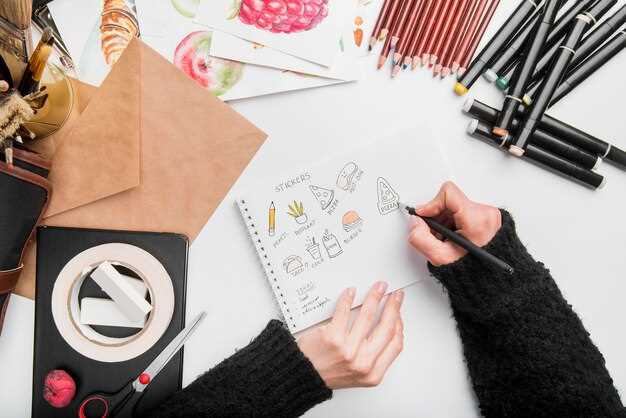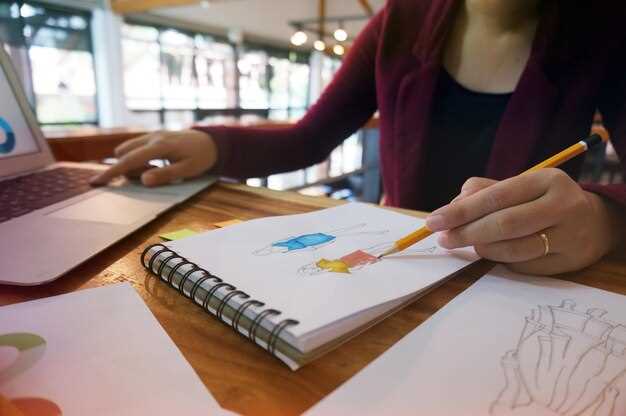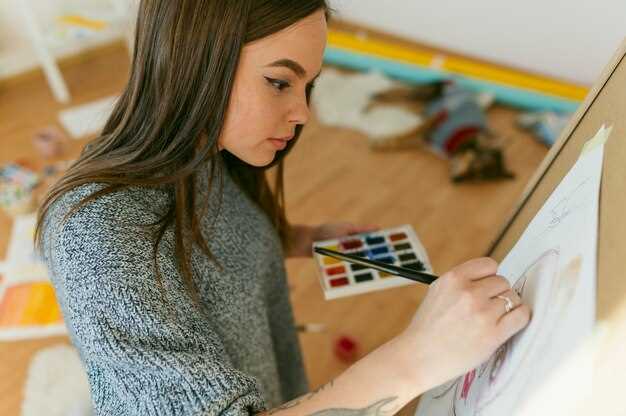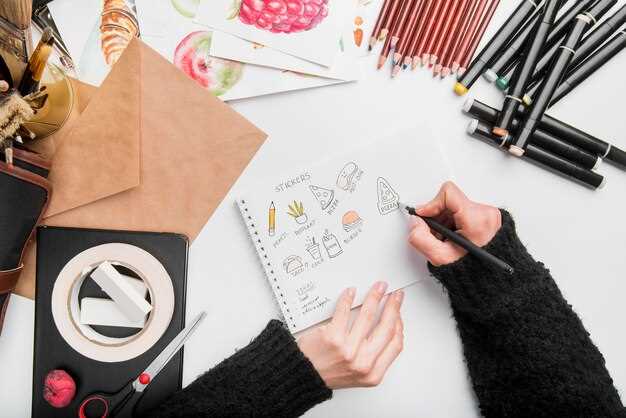Krita offers incredible tools for beginners venturing into the world of digital art. It’s an open-source platform that’s packed with a wide range of brushes and a customizable interface, making it ideal for those who wish to explore different artistic styles. Unlike some more complex programs, Krita provides an intuitive workflow, allowing new users to focus on creativity rather than wrestling with a steep learning curve. With features like layers, selection options, and a built-in color wheel, beginners can easily produce professional-quality artwork.
Autodesk SketchBook stands out as another excellent option, especially for those who favor sketching. While its previous premium features are now available for free, SketchBook comes with a simple interface that doesn’t overwhelm beginners. The brush engine is precise and fluid, catering to quick sketches and detailed illustrations alike. Its pen-friendly environment makes it a favorite for artists using drawing tablets, enabling natural hand movements to translate effortlessly on the screen.
For enthusiasts interested in vector art, Inkscape presents itself as a powerful free software alternative. It supports SVG (Scalable Vector Graphics) files, which are perfect for illustrations that need to be resized frequently without losing quality. Inkscape’s tools allow for clean lines and shapes while facilitating a degree of precision desirable for logos and detailed graphics. Despite being advanced, the software’s tools and functions are well-documented, helping beginners build their skillset progressively.
Pencil2D is specifically tailored for newcomers to the field of animation. This lightweight software focuses on frame-by-frame animation and is suitable for creating simple yet impactful animated drawings. Offering both bitmap and vector drawing capabilities, Pencil2D provides the flexibility needed to experiment with different techniques. Its straightforward interface is appreciated by beginners who want to dive into animation without feeling overwhelmed by too many options.
Exploring Top Free Drawing Software Options

Krita stands out as an exceptional choice for budding digital artists. It offers a robust set of tools, including customizable brushes, a comprehensive color wheel, and intuitive layer management. Whether creating detailed illustrations or lively animations, Krita’s versatility makes it a go-to option.
For those who prefer a simpler interface without sacrificing functionality, Autodesk SketchBook provides a seamless drawing experience. Featuring a clean workspace and minimalistic design, it’s ideal for sketching on the go while maintaining access to professional-grade tools.
Another worthy contender is GIMP, perfect for those needing a powerful platform for both drawing and image editing. With its advanced features such as layer masks, filters, and blending modes, GIMP caters to artists looking to expand into photo manipulation alongside traditional illustration.
Inkscape serves as a fantastic resource for creating vector-based art. With its precision path tools, flexible drawing capabilities, and extensive plugin support, Inkscape is indispensable for digital designers focusing on scalability and detail.
Finally, MediBang Paint offers an excellent platform for comic creation. Featuring integrated assets like speech bubbles and screen tones, it’s an ideal choice for artists looking to delve into manga or comic book artistry without breaking the bank.
Understanding the Features of Krita
Start your creative journey with Krita by exploring its impressive set of features tailored for artists. Krita stands out with its intuitive interface, extensive brush library, and advanced layering system, making it an excellent choice for both beginners and seasoned artists. Let’s break down the key features:
Powerful Brush Engine: Krita offers over 100 professionally made brushes. Explore options like pencils, inks, and watercolors, and customize each brush with parameters like size, shape, and texture to suit your artistic style.
Layer Management: Organize your artwork efficiently with unlimited layers. Crita’s non-destructive editing allows for quick adjustments without altering the original work. Utilize layer masks and blending modes for complex compositions.
Stabilizers and Assistants: Create smooth lines and precise details effortlessly. Krita’s stabilizers help manage shaky hands, while assistants like rulers and guides assist in maintaining perspective and proportions in your drawings.
Advanced Selection Tools: Refine your selections with multiple tools such as magic wand or freehand selection. The ability to save and load selections aids in making isolated edits without disrupting the rest of your work.
Color Management: Work with a range of color spaces and manage palettes easily. Krita supports CMYK, RGB, and LAB, maintaining the integrity of your colors across different platforms and print formats.
Customizable Interface: Adjust panels, dockers, and shortcuts according to your workflow. Save different setups for varied projects, ensuring seamless transition between different types of artwork.
Taking full advantage of these features will enhance your drawing experience, allowing you to create stunning artwork that matches your vision. Krita’s user-friendly design ensures that whether you’re painting digitally or sketching concepts, every tool you need is within reach.
Getting Started with Inkscape for Vector Art
First, download and install Inkscape from its official website to ensure you have the latest version. Upon launching the software, take a moment to familiarize yourself with the interface. The primary toolset lies on the left, while essential menus and settings are at the top. A right-click in the space provides easy access to additional options, making navigation smooth.
Create a new document by selecting File > New. You’ll work on a canvas that can be resized in File > Document Properties. Here, adjust dimensions to match your project needs. Begin experimenting with the Pencil Tool to draw freehand shapes, and switch to the Bezier Tool for more precise lines. Construct complex shapes with the Shapes Tool by combining basic forms like rectangles, circles, and stars.
Get comfortable adjusting objects by using the Node Tool. This tool allows you to tweak curves and angles of any vector object for more detailed designs. Group and ungroup elements as needed to maintain organization, using Object > Group and Object > Ungroup.
Use Layers to separate different elements of your artwork. Access the layers panel under Layer > Layers, where you can add, rename, or reorder layers, maintaining clarity and ease in managing complex illustrations.
Explore color options with the Fill and Stroke dialog found under Object > Fill and Stroke. Here you can choose colors, adjust transparency, and apply gradients to give your vector artwork a more polished look. Don’t forget to periodically save your work using File > Save to prevent any data loss.
Once your design is complete, export it by going to File > Export PNG Image. This action saves your vector art in a bitmap format, enabling you to share or print your work according to your project’s requirements.
Utilizing Autodesk SketchBook for Sketching
Begin by launching Autodesk SketchBook and familiarize yourself with the intuitive interface. Its simplicity helps beginners quickly navigate through essential tools. Focus on the toolbar located on the top; this contains vital tools for sketching.
Select the pencil tool – it mimics traditional sketching pens with precision. Adjust the size and opacity to create diverse line weights. Experiment with the pressure sensitivity feature using a stylus for a natural drawing experience.
Use layers to enhance your workflow. Layers help organize different elements of your artwork, allowing for non-destructive editing. Create various layers for sketches, outlines, and details, merging them if needed.
Autodesk SketchBook offers customizable brushes. Access the brush library and experiment with different textures. Create custom brushes to fit specific sketching styles, expanding your creative possibilities.
Leverage the symmetry tool to create perfectly balanced artwork. This feature reflects your strokes for mirrored designs, saving time and improving accuracy. Fit for both vertical and horizontal symmetry, it’s a must-try for intricate designs.
Utilize the color wheel for selecting a palette. Combine it with the fill bucket tool for flat colors and gradients, enhancing the visual appeal of your sketches. Manage your color presets for quick access.
| Feature | Use |
|---|---|
| Pencil Tool | Simulates traditional sketching |
| Layers | Organize and edit elements separately |
| Custom Brushes | Create personalized drawing tools |
| Symmetry Tool | Create balanced, mirrored designs |
| Color Wheel | Select and manage color palettes |
Once you’ve completed your sketch, utilize the export options to save your artwork in various formats. Export to cloud services for easy sharing with friends or collaborators. Autodesk SketchBook simplifies the transition from idea to finished sketch, making it an excellent tool for aspiring artists.
Comparing GIMP to Traditional Paint Programs
Opt for GIMP if you need a free alternative that rivals many paid applications. GIMP offers a robust set of features comparable to traditional paint programs but with the added benefit of customization. Here’s how GIMP stands apart:
- Layer Support: GIMP allows for complex image manipulation through its comprehensive layer system, similar to advanced paid software. Traditional paint programs often lack this capability, limiting intricate edits.
- Customizable Interface: Tailor GIMP’s interface to your workflow. Unlike conventional paint programs with static layouts, GIMP’s flexibility ensures a more personalized drawing experience.
- Advanced Tools: GIMP includes tools for photo retouching, drawing, and image composition that surpass the basic toolset of many traditional paint applications. Features like clone, healing, and perspective tools boost creative potential.
- File Format Support: Handle various file formats with ease in GIMP. While traditional programs might struggle with some modern standards, GIMP provides compatibility across formats like PSD, PNG, JPEG, and others.
- Community and Plugins: Access a thriving user community that contributes to an extensive library of plugins. This open-source advantage allows frequent enhancements and personalized tool options unavailable in more antiquated software.
While traditional paint programs provide basic functionalities, GIMP delivers a powerful suite of tools for more demanding projects. Its adaptability and feature set make it an excellent choice for anyone seeking to upgrade from basic paint software without financial investment.
Exploring Medibang Paint for Comic Artists
Jump straight into creating your first comic with Medibang Paint by downloading the software for free from their official website. Specifically designed for comic artists, Medibang Paint stands out with its impressive set of features tailored to comic creation. These include custom comic panel layouts, a comprehensive set of brushes, and an extensive library of tones and backgrounds.
Maximize efficiency with Medibang Paint’s cloud-saving capabilities, allowing you to access your artwork from any device. This is particularly useful if you work across multiple platforms or need to collaborate with other artists remotely. Additionally, the software offers time-saving shortcuts and customizable keyboard commands to streamline your workflow.
Leverage Medibang Paint’s community features to exchange tips and resources with other artists. Engaging with the community helps you stay updated on the latest trends and techniques, enriching your creative process.
| Key Features | Description |
|---|---|
| Comic Panel Layouts | Quickly design professional-looking comic panels with customizable templates. |
| Brush Variety | A wide range of brushes from ink pens to watercolor, ensuring adaptability for different artistic styles. |
| Cloud Storage | Keep your work synchronized across devices with seamless backup options. |
| Collaboration Tools | Share your artwork and get feedback through built-in community features. |
To refine your talent, explore the tutorials available on Medibang Paint’s website and YouTube channel. These resources offer step-by-step guides on using advanced features, ensuring you’re making the most out of the software. With its specialized tools and vibrant community support, Medibang Paint empowers comic artists to bring their stories to life.
Beginner Art Tips for Optimal Use of Free Drawing Software

Choose a simple software interface that minimizes distraction and supports intuitive learning. Prioritize tools with essential features like layers, basic shapes, and customizable brushes, as they are crucial for beginners. Experiment with each feature by sketching simple objects or scenes, gradually increasing complexity as your confidence grows.
Leverage online tutorials specific to your chosen software for targeted learning. Platforms like YouTube offer step-by-step guides that can help you master tools and techniques quickly. Participate in beginner-friendly online art communities and forums to receive constructive feedback and share progress.
Use keyboard shortcuts to speed up your workflow. Most free drawing programs offer customizable shortcuts for commonly used tools, enhancing efficiency and allowing more time for creative exploration. Keep a list of these shortcuts handy until they become second nature.
Regularly save your work using cloud storage solutions. This ensures that your projects are safe from unexpected software crashes or hardware issues, keeping your creative output secure. Take advantage of any available auto-save features to further safeguard your art.
Experiment with different brush settings to understand texture and depth. Color swatches can assist in maintaining a consistent palette, and practicing color theory will enrich your digital illustrations. Stay patient as you refine your skills, focusing on progress rather than perfection.
Setting Up Your Digital Workspace
Choose the right software to start your digital art journey. For beginners seeking simplicity and functionality without cost, Krita or Autodesk SketchBook are excellent choices. Once selected, maximize your workspace efficiency by arranging your tools and menus for easy access. Disable any unnecessary tool panels to create a clutter-free environment.
- Set Up Your Hardware: Ensure your tablet or drawing device is connected correctly. Adjust pen sensitivity settings for precise control and customize shortcut buttons for quick tool changes.
- Calibrate Your Display: Accurate colors are essential. Use your software’s color calibration tools to align your monitor with output expectations, ensuring that what you see on the screen matches your print or web output.
Organize Your Files: Create a dedicated folder structure on your computer for your projects. Use clear and consistent naming conventions to avoid confusion. Regularly back up your work using cloud services or external drives to prevent data loss.
- Customize your Canvas: Adjust the default canvas size and resolution based on your project’s needs. For beginners, a standard size might be 1920×1080 pixels to balance detail and performance.
- Explore Keyboard Shortcuts: Familiarize yourself with essential shortcuts. They save time and improve your workflow. Customize shortcuts within your software for tools you use frequently.
Finally, maintain a comfortable, ergonomic setup. Adjust your chair and desk height to prevent strain during long drawing sessions. Use a desk lamp with adjustable brightness to keep your working area well-lit without causing glare on your screen.
Choosing the Right Tools for Your Art Style
Identify your art style to select tools that complement your creative process. For digital painters, prioritize software with a broad brush library, like Krita, which offers customizable brushes that mimic natural media. Explore its blending modes to achieve smooth transitions and realistic textures.
If you lean towards vector art, install Inkscape. Its precision with Bézier curves and path operations suits illustrators who focus on clean lines and scalability. Mastering its node editing tools can enhance your ability to create intricate details.
Concept artists can benefit from software like Sketchbook, renowned for its intuitive interface and flexible toolset. Use its perspective guides and symmetry tools to quickly draft dynamic scenes and characters without losing spontaneity.
For animators, OpenToonz provides a robust platform that includes frame-by-frame animation options and tweening capabilities. Take advantage of its ability to import scanned drawings, making it easy to blend traditional and digital techniques effectively.
Experiment with each option to find the most comfortable fit for your workflow. Balancing ease of use with the necessary features can greatly enhance your creative output.
Practicing Basic Techniques with Tutorials
Select a drawing software that provides a wide range of tutorials to boost your basic skills quickly. Look for programs like Krita, which offers a comprehensive tutorial section right within the software. These tutorials cover various styles and techniques, helping you understand fundamental concepts such as shading, perspective, and blending colors.
Dive into YouTube for an endless supply of beginner-friendly drawing tutorials. Channels like “DrawingWiffWaffles” and “Proko” can guide you through everything from sketching simple objects to mastering anatomy. Use these resources to practice specific techniques at your own pace.
Join online communities like DeviantArt or Reddit’s r/learntodraw. These platforms are filled with experienced artists who share tips and tricks through tutorial threads. Engaging with these communities can provide personalized feedback and additional support as you refine your skills.
Experiment with tutorial books such as “Drawing on the Right Side of the Brain” by Betty Edwards. This book offers practical exercises that improve your ability to see as an artist and enhance your drawing proficiency. Ensuring regular practice with clear guidance can transform your initial attempts into impressive artworks.
Q&A:

What are some recommended free drawing software options for beginners?
There are several great free drawing software options suitable for beginners. Some popular ones include Krita, which offers a wide range of brushes and tools; GIMP, known for its flexibility and extensive features; and Inkscape, which is excellent for vector-based drawing. Each of these tools provides different functionalities that can help new artists develop their skills.
How can I start using these drawing programs if I’m new to digital art?
Begin by choosing a program that matches your interests and needs. Many drawing programs have online tutorials and user communities that can help you learn the basics. Spend time experimenting with different tools and features to get a feel for the software. Joining forums or social media groups can also be helpful, as you can ask questions and get advice from more experienced users.
What should I consider when choosing a free drawing software?
When selecting a free drawing software, consider factors such as the type of art you want to create (e.g., digital painting, illustration, vector art), the interface’s user-friendliness, the availability of tutorials and community support, and the software’s compatibility with your operating system. Choosing a tool that aligns with your goals and skill level can make your learning experience more enjoyable.
Can free drawing software provide professional results?
Yes, many artists use free drawing software to create professional quality work. Programs like Krita, GIMP, and Inkscape offer robust tools and features that can achieve impressive results. The key is to invest time in learning how to effectively use the software and to practice developing your artistic skills.
Are there any limitations to using free drawing software compared to paid versions?
While free drawing software can be very powerful, they might lack some advanced features available in paid versions, such as specific brush engines, advanced layer management, or customer support. However, for beginners and many hobbyists, the capabilities of free software are often sufficient to create a wide range of digital art projects.
Which free drawing software is suitable for complete beginners who have never used digital art tools before?
One excellent option for beginners is Krita. It offers a user-friendly interface and provides a vast array of brushes, tools, and templates that cater to novice digital artists. Krita also delivers tutorial resources and a supportive online community, making the learning curve more manageable for newcomers. The software is open-source, which means it’s completely free to use, and it’s compatible with Windows, macOS, and Linux.





